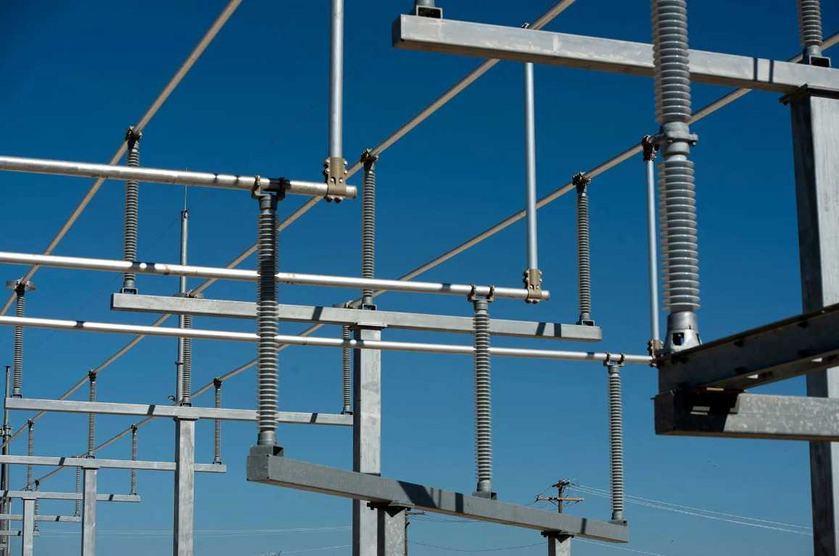In 2016, Alex de Vries read somewhere that a single bitcoin transaction consumes as much energy as the average American household uses in a day. At the time, de Vries, who is Dutch, was working at a consulting firm. In his spare time, he wrote a blog, called Digiconomist, about the risks of investing in cryptocurrency. He found the energy-use figure disturbing.
“I was, like, O.K., that’s a massive amount, and why is no one talking about it?” he told me recently over Zoom. “I tried to look up some data, but I couldn’t really find anything.” De Vries, then twenty-seven, decided that he would have to come up with the information himself. He put together what he called the Bitcoin Energy Consumption Index, and posted it on Digiconomist. According to the index’s latest figures, bitcoin mining now consumes a hundred and forty-five billion kilowatt-hours of electricity per year, which is more than is used by the entire nation of the Netherlands, and producing that electricity results in eighty-one million tons of CO2, which is more than the annual emissions of a nation like Morocco. De Vries subsequently began to track the electronic waste produced by bitcoin mining—an iPhone’s worth for every transaction—and its water use—which is something like two trillion liters per year. (The water goes toward cooling the servers used in mining, and the e-waste is produced by servers that have become out of date.)
Last year, de Vries became concerned about another energy hog: A.I. “I saw that it has a similar capability, and also the potential to have a similar growth trajectory in the coming years, and I felt immediately prompted to make sure people are aware that this is also energy-intensive technology,” he explained. He added a new tab to his blog: “AI sustainability.” In a paper he published last fall, in Joule, a journal devoted to sustainable energy, de Vries, who now works for the Netherlands’ central bank, estimated that if Google were to integrate generative A.I. into every search, its electricity use would rise to something like twenty-nine billion kilowatt-hours per year. This is more than is consumed by many countries, including Kenya, Guatemala, and Croatia.
“There’s a fundamental mismatch between this technology and environmental sustainability,” de Vries said. Recently, the world’s most prominent A.I. cheerleader, Sam Altman, the C.E.O. of OpenAI, voiced similar concerns, albeit with a different spin. “I think we still don’t appreciate the energy needs of this technology,” Altman said at a public appearance in Davos. He didn’t see how these needs could be met, he went on, “without a breakthrough.” He added, “We need fusion or we need, like, radically cheaper solar plus storage, or something, at massive scale—like, a scale that no one is really planning for.”
Last week, the International Energy Agency announced that energy-related global CO2 emissions rose, yet again, in 2023, to more than thirty-seven billion metric tons. The increase comes at a time when the whole world is supposedly striving to reach net-zero emissions, and it indicates that global efforts are, to put it mildly, falling short. Much of the increase in emissions came from China, and most of it was driven by century-old technologies, such as the internal-combustion engine. So data centers are, for now at least, a small part of the problem. Still, as the use of A.I. ramps up and bitcoin prices reach new heights, the question is: How can the world reach net zero if it keeps inventing new ways to consume energy? (In the U.S., data centers now account for about four per cent of electricity consumption, and that figure is expected to climb to six per cent by 2026.)
Mining cryptocurrencies like bitcoin eats up electricity owing to the way the system was set up. To acquire bitcoin (and other currencies that rely on a similar scheme), miners compete to answer cryptographic riddles. Winning the competition takes a lot of computing power. As a result, server farms devoted to crypto mining tend to be situated in parts of the world where electricity is cheap. China used to lead the world in crypto mining, but it imposed a ban on the practice in 2021, and now the U.S. is No. 1. A few months ago, the U.S. Department of Energy tried to compel mining concerns to report their energy use, but in February a Texas judge issued a temporary restraining order blocking the effort. (According to the White House Office of Science and Technology Policy, crypto mining in the U.S. uses almost as much energy as all the nation’s home computers combined.) Meanwhile, the higher the price of bitcoin rises—it reached a record of sixty-nine thousand dollars on March 5th—the bigger the financial incentives for mining it, and the more energy consumed.
Artificial intelligence requires a lot of power for much the same reason. The kind of machine learning that produced ChatGPT relies on models that process fantastic amounts of information, and every bit of processing takes energy. When ChatGPT spits out information (or writes someone’s high-school essay), that, too, requires a lot of processing. It’s been estimated that ChatGPT is responding to something like two hundred million requests per day, and, in so doing, is consuming more than half a million kilowatt-hours of electricity. (For comparison’s sake, the average U.S. household consumes twenty-nine kilowatt-hours a day.)
A.I. could potentially be used to alleviate some of the problems it is exacerbating. For instance, it might be used to improve the efficiency of renewable-energy systems, which could reduce emissions from server farms. But it seems unlikely that such gains will keep up with A.I.’s growing electricity demands; this, presumably, is why Altman argues that a technological breakthrough is needed.
De Vries, for his part, is dismayed by what he sees as a lack of human learning in the face of so much machine learning. “I think the only thing that’s realistic in terms of policy, at least in the short to medium term, is disclosure requirements,” he said. “It’s taken a very long time before we got there with regard to cryptocurrencies, and I’m disappointed that we haven’t gotten there sooner with A.I. It’s like we saw what cryptocurrency mining could do, and we totally forgot about it.”






























